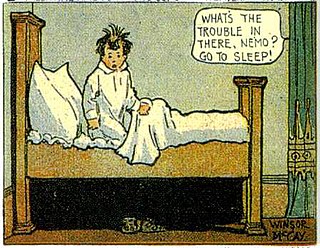
Little Nemo is a fictional character created by American cartoonist Winsor McCay. He originated in an early comic strip by McCay, Dream of the Rarebit Fiend, before receiving his own spin-off series, Little Nemo in Slumberland. The full-page weekly strip depicted Nemo having fantastic dreams that were interrupted by his awakening in the final panel. The strip is considered McCay's masterpiece for its experiments with the form of the comics page, its use of color and perspective, its timing and pacing, the size and shape of its panels, and its architectural and other details.
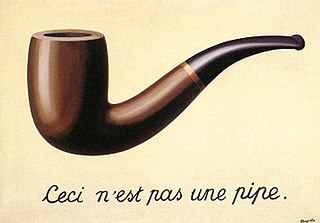
Surrealism is an art and cultural movement that developed in Europe in the aftermath of World War I in which artists aimed to allow the unconscious mind to express itself, often resulting in the depiction of illogical or dreamlike scenes and ideas. Its intention was, according to leader André Breton, to "resolve the previously contradictory conditions of dream and reality into an absolute reality, a super-reality", or surreality. It produced works of painting, writing, theatre, filmmaking, photography, and other media as well.

Salvador Domingo Felipe Jacinto Dalí i Domènech, Marquess of Dalí of Púbol, known as Salvador Dalí, was a Spanish surrealist artist renowned for his technical skill, precise draftsmanship, and the striking and bizarre images in his work.
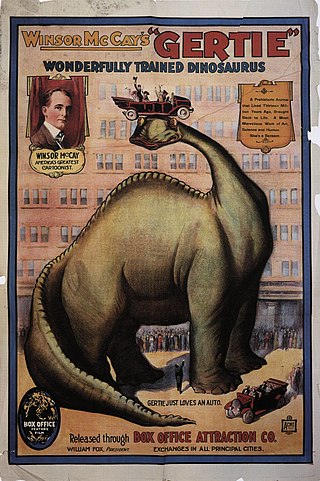
Gertie the Dinosaur is a 1914 animated short film by American cartoonist and animator Winsor McCay. It is the earliest animated film to feature a dinosaur. McCay first used the film before live audiences as an interactive part of his vaudeville act; the frisky, childlike Gertie did tricks at the command of her master. McCay's employer William Randolph Hearst curtailed McCay's vaudeville activities, so McCay added a live-action introductory sequence to the film for its theatrical release renamed Winsor McCay, the Famous Cartoonist, and Gertie. McCay abandoned a sequel, Gertie on Tour, after producing about a minute of footage.

Meshes of the Afternoon is a 1943 American experimental silent short film directed by and starring wife-and-husband team, Maya Deren and Alexandr Hackenschmied.

Zenas Winsor McCay was an American cartoonist and animator. He is best known for the comic strip Little Nemo and the animated film Gertie the Dinosaur (1914). For contractual reasons, he worked under the pen name Silas on the comic strip Dream of the Rarebit Fiend.

Dream of the Rarebit Fiend is a newspaper comic strip by American cartoonist Winsor McCay, begun September 10, 1904. It was McCay's second successful strip, after Little Sammy Sneeze secured him a position on the cartoon staff of the New York Herald. Rarebit Fiend appeared in the Evening Telegram, a newspaper published by the Herald. For contractual reasons, McCay signed the strip with the pen name "Silas".
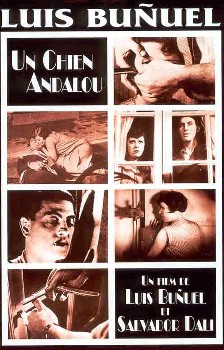
Un Chien Andalou is a 1929 French- Spanish surrealist silent short film directed, produced and edited by Spanish filmmaker Luis Buñuel, who also co-wrote the screenplay with Spanish surrealist painter Salvador Dalí. Buñuel's first film, it was initially released in a limited capacity at Studio des Ursulines in Paris, but became popular and ran for eight months.

Luis Buñuel Portolés was a Spanish and Mexican filmmaker who worked in France, Mexico, and Spain. He has been widely considered by many film critics, historians, and directors to be one of the greatest and most influential filmmakers of all time. Buñuel's works were known for their avant-garde surrealism which were also infused with political commentary.

The Persistence of Memory is a 1931 painting by artist Salvador Dalí and one of the most recognizable works of Surrealism. First shown at the Julien Levy Gallery in 1932, since 1934 the painting has been in the collection of the Museum of Modern Art (MoMA) in New York City, which received it from an anonymous donor. It is widely recognized and frequently referred to in popular culture, and sometimes referred to by more descriptive titles, such as "Melting Clocks", "The Soft Watches" or "The Melting Watches".

Eternal Sunshine of the Spotless Mind is a 2004 American science fiction romantic drama film directed by Michel Gondry, based on Charlie Kaufman's screenplay developed from a story by Gondry, Kaufman, and Pierre Bismuth. Starring Jim Carrey and Kate Winslet, along with supporting roles from Kirsten Dunst, Mark Ruffalo, Elijah Wood, and Tom Wilkinson, it follows two individuals who undergo a memory erasure procedure to forget each other after the dissolution of their romantic relationship. The title of the film is a quotation from the 1717 poem Eloisa to Abelard by Alexander Pope. It uses elements of psychological drama, science fiction, and a nonlinear narrative to explore the nature of memory and love.

Paprika is a 2006 Japanese adult animated surrealistic science fantasy psychological thriller film directed by Satoshi Kon. The film is based on the 1993 novel of the same name by Japanese author Yasutaka Tsutsui. It is Kon's fourth and final feature film before his death in 2010. The script was co-written by Kon and Seishi Minakami, who also wrote for Kon's TV series Paranoia Agent, the character design and animation director was Masashi Ando, the music was composed by Kon's frequent collaborator Susumu Hirasawa, and the art director was Nobutaka Ike, who worked on all of Kon's works. Japanese animation studio Madhouse animated and produced the film. The Japanese voice cast featured Megumi Hayashibara, Tōru Emori, Katsunosuke Hori, Tōru Furuya, Akio Ōtsuka, Kōichi Yamadera and Hideyuki Tanaka.
Twentieth-century art—and what it became as modern art—began with modernism in the late nineteenth century.
Surrealist cinema is a modernist approach to film theory, criticism, and production, with origins in Paris in the 1920s. The Surrealist movement used shocking, irrational, or absurd imagery and Freudian dream symbolism to challenge the traditional function of art to represent reality. Related to Dada cinema, Surrealist cinema is characterized by juxtapositions, the rejection of dramatic psychology, and a frequent use of shocking imagery. Philippe Soupault and André Breton’s 1920 book collaboration Les Champs magnétiques is often considered to be the first Surrealist work, but it was only once Breton had completed his Surrealist Manifesto in 1924 that ‘Surrealism drafted itself an official birth certificate.’
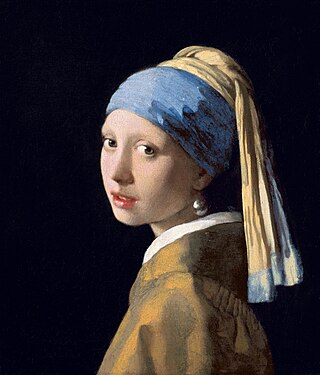
The history of Western painting represents a continuous, though disrupted, tradition from antiquity until the present time. Until the mid-19th century it was primarily concerned with representational and traditional modes of production, after which time more modern, abstract and conceptual forms gained favor.

How a Mosquito Operates is a 1912 silent animated film by American cartoonist Winsor McCay. The six-minute short depicts a giant mosquito tormenting a sleeping man. The film is one of the earliest works of animation, and its technical quality is considered far ahead of its time. It is also known under the titles The Story of a Mosquito and Winsor McCay and his Jersey Skeeters.

Eraserhead is a 1977 American surrealist psychological body horror film written, directed, produced, and edited by David Lynch. Lynch also created its score and sound design, which included pieces by a variety of other musicians. Shot in black and white, it was Lynch's first feature-length effort following several short films. Starring Jack Nance, Charlotte Stewart, Jeanne Bates, Judith Anna Roberts, Laurel Near, and Jack Fisk, it tells the story of a man (Nance) who is left to care for his grossly deformed child in a desolate industrial landscape.

JoWonder, born Joanna Woodward, has a multidisciplined artistic practice, a British painter, avant-garde stopmotion animator, performance artist and writer. They are noted for being from a generation of British avant-garde animators such as Brothers Quay and Phil Mulloy. They made/make work which brings concepts from postmodern literature, the surrealist movement, and contemporary art to cinema. Their films, which use collage, puppets, textured painting, and text, provide counterpoint between the metaphysical and the playful. Lilliputian characters are often introduced to an apocalyptic realm ruled by giants. Jo's work combines: their own literature, religious, political, fairy-tale, and scientific themes using satire and symbolism.
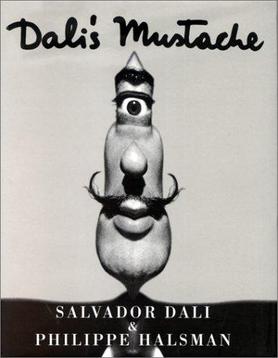
Dali's Mustache is an absurdist humorous book by the surrealist artist Salvador Dalí (1904–1989) and his friend, the photographer Philippe Halsman (1906–1979). The first edition was published in October 1954 in New York; slightly modified French editions followed in the 1980s and 1990s.

















